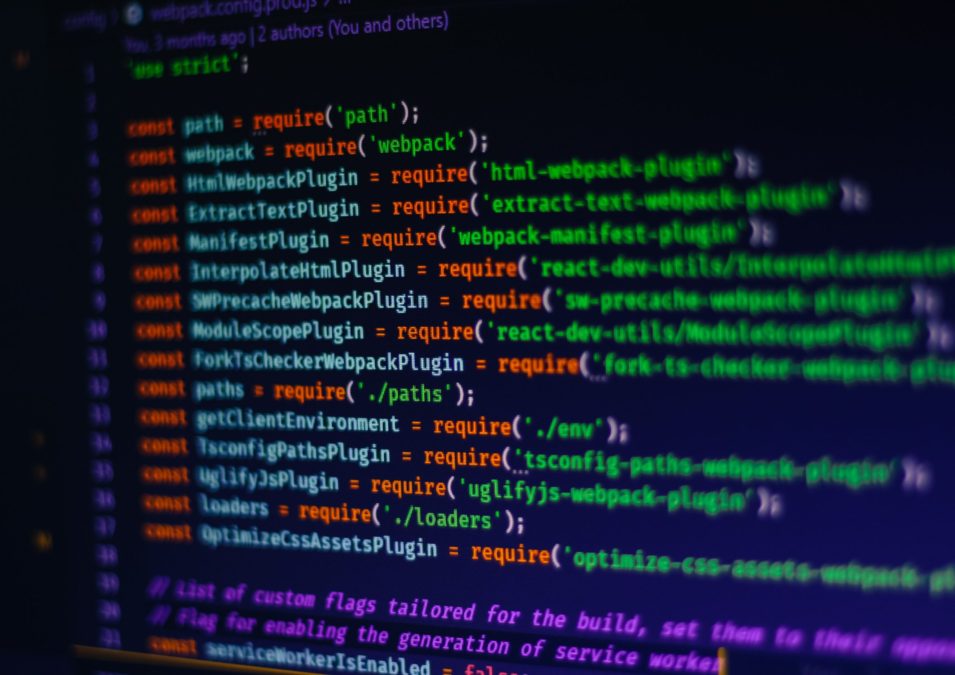
- #1. Reduce application size with Webpack
- #2. Remove unused JavaScript
- #3. Place JavaScript at the bottom of the page
- #4. Use minification
- #5. Use Gzip compression
- #6. Use HTTP/2
- #7. Use pointer references
- #8. Trim your HTML
- #9. Use document.getElementById()
- #10. Batch your DOM changes
- #11. Buffer your DOM
- #12. Compress your files
- #13. Minify JavaScript code for smaller file sizes
- #14. Asynchronous loading of JavaScript: Defer and Async tags
- #15. Exclude unused components of .js libraries
- #16. Don’t forget var keyword when assigning a variable’s value for the first time.
- #17. Avoid the use of eval() or the Function constructor
- #18. Avoid unnecessary access to DOM
- #19. Use a JavaScript content delivery network (CDN)
- #20. Limit library dependencies
- Summary
JavaScript is a truly amazing tool for front-end programming and web development, creating interactive, feature-rich websites and fast, seamless web applications. Every web developer knows JavaScript, but when used without caution or expertise, it can be a double-edged sword.
Poorly written JavaScript code can slow your website, negatively affecting load times and rendering speed. Read on to find out how to reduce or avoid slodowns of your JS code.
#1. Reduce application size with Webpack
The size of the application gets increased when you keep adding JavaScript modules in the application. This method increases more files in your application, and thus the application becomes slower and bulkier. This decreases the overall quality of the application. Adding larger file size creates a massive gap between the content developers wrote and what the browser could understand.
#2. Remove unused JavaScript
Remove the JavaScript file, which is of no use in your application. It will reduce the transmission time, and it will also reduce the time which it takes for the browser to analyse and compile the code. Remove all the functionalities from your application, which are of no use to the users. Remove that with all the JavaScript code associated with it.
Elena Brown, a web developer at 1day2write and Write My X says- “Your web application will load faster and the user will have a better experience. Remove the unnecessary libraries or dependencies from your code that don’t serve any purpose.”
#3. Place JavaScript at the bottom of the page
This is one of the common techniques developers prefer to speed up the performance of the website. Placing JavaScript code at the top of the webpage slower down the performance. It’s good to place it at the bottom. Your webpage won’t just load faster but also in some cases it saves the total amount of code needed
#4. Use minification
This is another common technique to follow in web development when it comes to loading faster a website. You can reduce the size of your file by removing the unwanted JavaScript documents character such as tabs, spaces, etc. When you’re doing it make sure that you’re not changing the functionality of the website.

#5. Use Gzip compression
JavaScript files can be very large that may impact the load time of your website. Gzip which is good software can be used to compress your JavaScript file. Today most of the servers and clients support Gzip.
When a browser requests a resource, the server compresses the response before sending it to the web browser. This software reduces the size of the JavaScript file, saves bandwidth, and accelerates the performance of the website.
#6. Use HTTP/2
HTTP/2 is the latest version of the HTTP protocol and provides some great enhancements that will not only help improve your JavaScript performance but will also help speed up your site in general. HTTP/2 uses multiplexing, therefore allowing multiple requests and responses to be sent at the same time. If you haven’t moved to HTTPS yet, be sure to do so as soon as possible to take advantage of the performance improvements that HTTP/2 has to offer.
#7. Use pointer references
You can also cut down on DOM traversal trips by storing pointer references for in-browser objects during instantiation. If you don’t expect your DOM to change, storing a reference to the DOM or jQuery objects needed to create your page can help speed everything along. Alternatively, if you need to iterate inside a function, but you haven’t stored a reference, you can make a local variable with a reference to the object.
#8. Trim your HTML
Landon Wright. a business writer at Britstudent and PhD Kingdom advises- “The complexity of your HTML plays a large role in determining how long it takes to query and modify DOM objects. If you can cut your application’s HTML by half, you could potentially double your DOM speed.”
#9. Use document.getElementById()
Using jQuery lets you create specific selectors based on tag names and classes, but this approach necessitates several iterations as jQuery loops through DOM elements to find a match. You can speed up the DOM by using the document.getElementById() method instead.
#10. Batch your DOM changes
Every time you make DOM changes, batch them up to prevent repeated screen rendering. If you’re making style changes, try to make all of your modifications at once rather than applying changes to each style individually.
#11. Buffer your DOM
If you have scrollable DIVs, you can use a buffer to remove items from the DOM that aren’t currently visible inside the viewport. This technique helps you save on both memory usage and DOM traversal.
#12. Compress your files
Use a compression method such as Gzip or Brotli to reduce the size of your JavaScript files. With a smaller sizes file, users will be able to download the asset faster, resulting in improved performance.

#13. Minify JavaScript code for smaller file sizes
Minifying code is different from obfuscating code, but both are methods of transforming JavaScript—to be more difficult to read, or to make it smaller. Minification accomplishes the latter, and can shrink file sizes to decrease page load times.
Line breaks, additional spaces, comments etc.—all of this increases the size of a JavaScript file and affects the speed of page load. Compressing the code solves this issue well. Machines are not sensitive to the visual style of code like a human would be. Computers can read and launch minified code, even if all of your Javascript fits in just one string.
#14. Asynchronous loading of JavaScript: Defer and Async tags
Asynchronous loading of JavaScript is a type of sync loading. It means that your website loads in a multi-streamed way. When the browser finds the string with <script src=”some.js”></script>, it will stop creation of DOM and CSSOM models while the JavaScript is executed. This is why most JavaScript code is located after the main HTML code.
#15. Exclude unused components of .js libraries
Most developers use libraries like jQuery UI or jQuery Mobile as is. This means that the code includes all possible components of each library, when you may only need two or three. A similar situation occurs with other JavaScript libraries as well. If you have the ability to manage what components will be included in your package of library, definitely do it. Your website will load much faster, and your visitors will get a better experience.
#16. Don’t forget var keyword when assigning a variable’s value for the first time.
Assignment to an undeclared variable automatically results in a global variable being created. Avoid global variables.
#17. Avoid the use of eval() or the Function constructor
Use of eval or the Function constructor are expensive operations as each time they are called script engine must convert source code to executable code.
#18. Avoid unnecessary access to DOM
Accessing DOM slowers down the performance of the website. The browser has to refresh the page every time when you interact with the DOM outside the JavaScript native environment. It’s good to keep DOM access to a minimum or in your web application if you need to read the content several times then it’s good to save it in local variables.
Keep in mind that if you remove the value of the DOM then set the variable to NULL to avoid the memory leak in your application.
#19. Use a JavaScript content delivery network (CDN)
A CDN is not a panacea. For example, if your project is not worldwide and you opt to use a CDN that doesn’t have a local server in your country (e.g., the Russian Federation), this will increase a page load time. Using a CDN is supposed to make things run faster, but in certain cases, it can have the opposite effect. You can use Cedexis to generate reports that compare various CDNs to help you to decide which provider is most affordable for your use case.
#20. Limit library dependencies
Library dependencies add a lot to loading times, so strive to keep their use to a minimum, and avoid them entirely if at all possible. One way to reduce your dependency on external libraries is to rely more on in-browser technology.
Furthermore, if you need complex CSS selectors, try using Sizzle.js instead of jQuery. If you have libraries that contain just one feature, it makes more sense to just add that feature separately.
Summary

Many of the individual JavaScript speed-up tips above give your JS a very small performance boost; however, if implemented together, you and your users should notice a significant improvement in how fast your websites and applications run.
It may be difficult for you to remember all of these pointers when working under a deadline, but the sooner you start implementing best practices, the less likely you are to encounter JavaScript performance problems later on.
Therefore, you should keep your own personal list of JavaScript optimization techniques by your side until they become second nature.
[jwp-video n=”1″]
Note: This article was provided by Michael Dehoyos, who assists companies in their marketing strategy concepts, and contributes to numerous sites and publications. Also, he is a writer at Coursework Writing Service and a a web developer and editor at Essay Writing Service and Essay Help.




